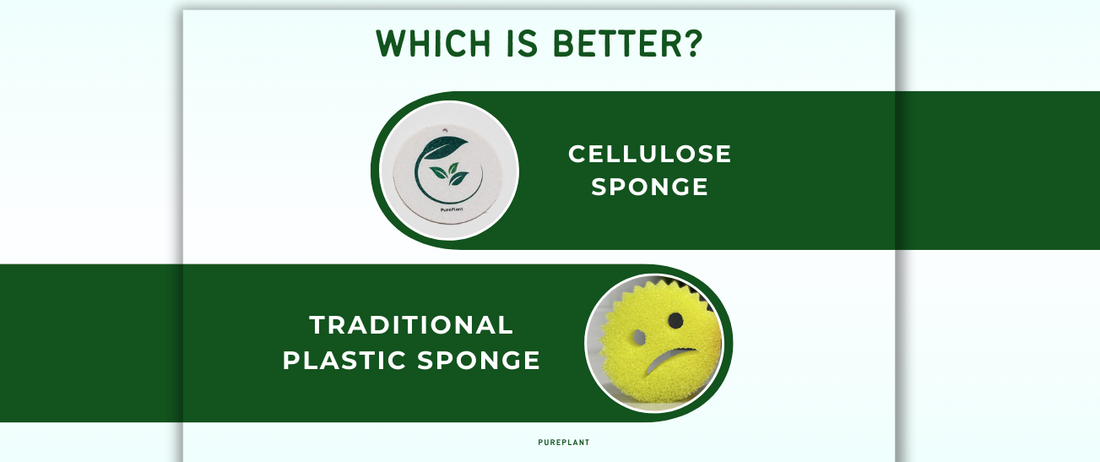
What is Cellulose Sponge? Is There a Greener Alternative to Traditional Plastic Sponges?
Share
When it comes to cleaning, the type of sponge you choose can make a big difference—not just in effectiveness, but in environmental impact as well. You’ve likely used plastic sponges for years, but have you heard of cellulose sponges? In this blog post, we'll explore what cellulose sponges are, how they compare to traditional plastic sponges, and why they might be the more eco-friendly choice for your home.
What is a Cellulose Sponge?

Cellulose sponges are made from natural plant fibers, such as wood pulp and cotton. These biodegradable materials make them an environmentally friendly option for cleaning. Unlike plastic sponges, cellulose sponges are free from synthetic chemicals and break down naturally, reducing waste in landfills.
Cellulose sponges are known for their absorbency and durability. They can hold a lot of water, making them perfect for wiping down surfaces or scrubbing dishes. Plus, they're easy to clean—just pop them in the dishwasher or soak them in boiling water to sanitize.
What is a Traditional Plastic Sponge?
The plastic sponge, often recognized by its bright colors and synthetic materials, has long been the go-to cleaning tool for households. These sponges are typically made from polyurethane or polyester, both of which are petroleum-based. While they’re affordable and readily available, they pose significant environmental challenges.
Plastic sponges don’t biodegrade, meaning they can sit in landfills for hundreds of years. Additionally, when they wear down, they shed microplastics into the environment, polluting waterways and harming marine life. Despite their low cost, their environmental footprint makes them far less sustainable than their cellulose counterparts.
Cellulose Sponge vs. Plastic Sponge: The Key Differences

1. Material Composition
- Cellulose Sponges: Made from natural, renewable plant materials.
- Plastic Sponges: Made from synthetic, petroleum-based materials.
2. Environmental Impact
- Cellulose Sponges: Biodegradable and compostable, leaving little to no trace behind.
- Plastic Sponges: Non-biodegradable, contributing to plastic pollution and microplastics in the environment.
3. Durability
- Cellulose Sponges: Durable but may break down faster with frequent heavy use. However, their compostable nature makes them a sustainable option.
- Plastic Sponges: Tend to last longer but shed microplastics over time, which can be harmful to the environment.
4. Absorbency
- Cellulose Sponges: Highly absorbent, making them great for soaking up liquids and cleaning spills.
- Plastic Sponges: Less absorbent, which may require more effort to clean surfaces effectively.
Why Should You Switch to a Cellulose Sponge?
1. Eco-Friendly: Switching to a cellulose sponge significantly reduces your environmental footprint. You’ll be using a product that can return to the earth, not one that contributes to long-term plastic pollution.
2. Safe and Non-Toxic: Cellulose sponges are free from the harmful chemicals often found in synthetic plastic sponges. This makes them safer for your home and for the planet.
3. Compostable: When your cellulose sponge has reached the end of its life, you can throw it in the compost bin, knowing it will break down naturally.
4. Versatile: Whether you need to scrub a dish, clean countertops, or tackle tough stains, cellulose sponges are up for the challenge.
Conclusion: Is It Time to Make the Switch?
While traditional plastic sponges have been a staple in many homes, their environmental impact is undeniable. In contrast, cellulose sponges offer an eco-friendly alternative without sacrificing cleaning power. By making the switch, you’re choosing a product that aligns with a more sustainable lifestyle, helping to protect our planet for future generations.
